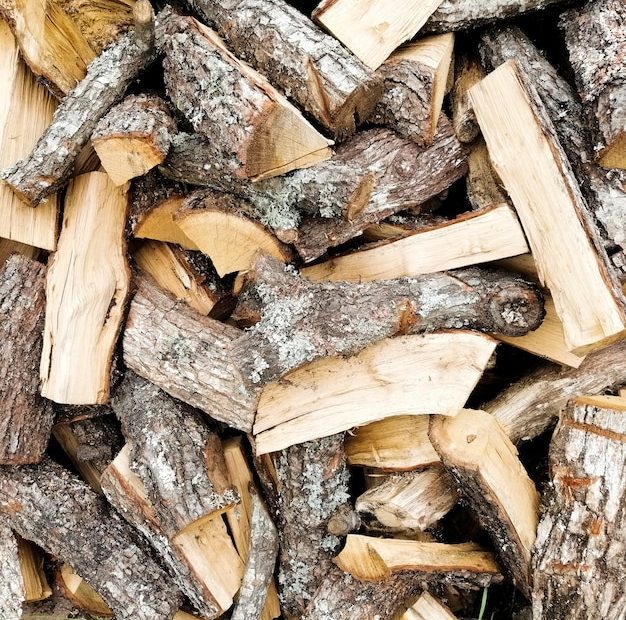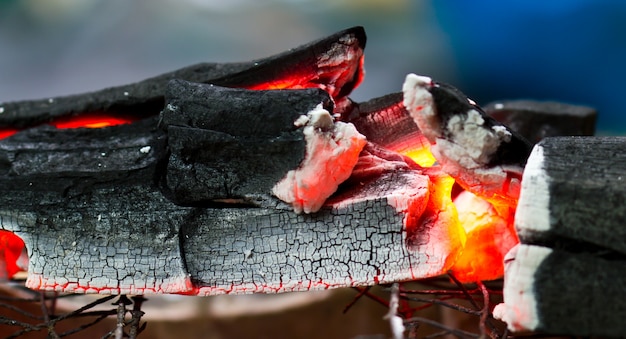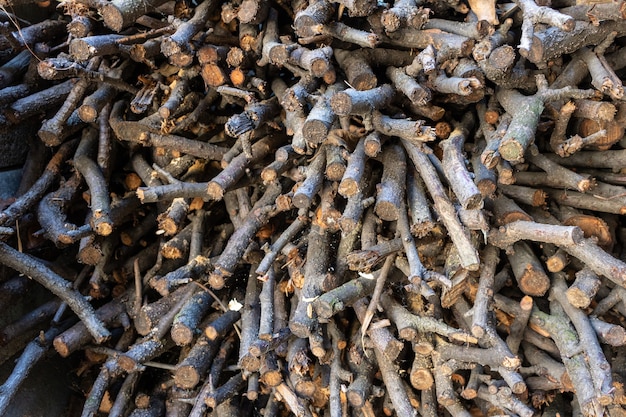Why are my wood chips not smoking?
Smoking wood chips are a popular choice for adding flavor to grilled or smoked foods. However, there may be instances when your wood chips fail to produce the desired smoke. In this article, we will explore some common reasons why your wood chips might not be smoking and provide tips on how to overcome these challenges.
Lack of Moisture
One possible reason for wood chips not smoking is that they are too dry. Dry wood chips tend to burn quickly without creating enough smoke. To ensure optimal smoking results, it is important to soak the wood chips in water for at least 30 minutes before using them. This allows the chips to absorb moisture, resulting in a slower and more consistent burn, producing ample smoke.
Incorrect Placement
The placement of wood chips within your grill or smoker can also affect their ability to produce smoke. If you place the wood chips directly over high heat or flames, they may ignite rather than smolder, reducing their smoke-generating potential. Instead, try placing the soaked wood chips in a foil packet or a dedicated smoker box, positioned away from direct heat. This indirect method allows the chips to smolder slowly, releasing flavorful smoke throughout the cooking process.
Low Temperature
Another factor that can impact the smoke production of wood chips is a low cooking temperature. For optimal smoking, maintain a steady temperature between 225°F (107°C) and 250°F (121°C). At lower temperatures, the wood chips may struggle to ignite and generate sufficient smoke. Ensure that your grill or smoker is properly calibrated and capable of maintaining the desired temperature range.
Quality and Type of Wood
The quality and type of wood chips used can also influence smoke production. It is essential to select wood chips specifically designed for smoking, as not all types of wood will produce desirable results. Hardwoods like hickory, oak, apple, or cherry are commonly used for smoking due to their rich smoky flavors. Additionally, using fresh wood chips is crucial, as stale or old wood chips may have lost their moisture content, hindering smoke production.
Insufficient Airflow
Adequate airflow is vital for maintaining a steady burn and smoke production. If your wood chips are not smoking, ensure that there is sufficient ventilation in your grill or smoker. Clean out any ash buildup or debris from the air vents to promote proper airflow. Additionally, avoid overcrowding the grill or smoker, as this can restrict the circulation of smoke and airflow.
Proper Ignition
When using wood chips, it is crucial to allow them enough time to properly ignite and start producing smoke. If you notice your wood chips aren’t smoking, check if they have caught fire or simply turned to ash. If they have ignited, reduce the heat or move them to a cooler area to prevent excessive burning. However, if they are only turning to ash without producing smoke, it may indicate that they haven’t fully ignited. In such cases, removing them and replacing them with fresh wood chips can help overcome this issue.
By addressing these common issues, you will improve your chances of achieving that perfect smoky flavor when using wood chips for grilling or smoking. Remember to experiment with different wood types and combinations to find your preferred flavor profile. Happy smoking!
Does Wood Chips Go Bad?
Wood chips are a popular choice for landscaping and gardening, thanks to their many benefits. They help retain moisture, improve soil quality, and control weed growth. However, if you have leftover wood chips or if you’ve purchased a large quantity, you may be wondering if they go bad over time.
How Long Do Wood Chips Last?
Wood chips can last a long time if stored properly. Generally, they do not go bad in the traditional sense, but their quality and effectiveness can be affected by various factors. One such factor is exposure to moisture. If wood chips are left exposed to rain or high humidity, they can start to decompose and develop mold or fungi.
Proper Storage: To ensure your wood chips last longer, it’s crucial to store them in a dry and well-ventilated area. Covering them with a tarp or using a container with a lid can help protect them from moisture and harsh weather conditions. Additionally, regularly inspecting the wood chips for any signs of mold or fungi can prevent further damage.
Signs of Spoiled Wood Chips
While wood chips don’t necessarily go bad, there are signs to look out for to determine if they have spoiled:
- Foul Odor: If the wood chips emit a strong, unpleasant smell, it could indicate decomposition or the presence of mold.
- Mold or Fungi Growth: Visible mold or fungi growth on the wood chips is a clear indication that they have spoiled.
- Unusual Texture: If the wood chips feel slimy or have a mushy texture, it’s a sign that they are no longer usable.
- Insect Infestation: Wood chips that have been infested by insects, such as termites or carpenter ants, should not be used.
Tip: If you’re unsure about the quality of your wood chips, it’s best to err on the side of caution and avoid using them in gardens or landscaping projects.
In conclusion, wood chips can last a long time if stored properly, away from moisture and harsh weather conditions. However, it’s important to regularly inspect them for signs of spoilage, such as foul odor, mold growth, unusual texture, or insect infestation. By taking proper care of your wood chips, you can ensure their longevity and effectiveness for your gardening needs.
How long does wood chip last?
Wood chip is a versatile and commonly used material for various purposes such as gardening, landscaping, and animal bedding. However, one question that often comes up is how long wood chip can last. In reality, the longevity of wood chip depends on several factors, including the type of wood used, the environment it is placed in, and how it is maintained.
Factors affecting the lifespan of wood chip:
- Type of wood: Different types of wood have different durability levels. Hardwood chips, like oak or beech, tend to last longer than softwood chips, such as pine or cedar.
- Environment: Wood chip can last longer in protected areas where it is less exposed to harsh weather conditions. If placed in an open area, wood chip may break down faster due to sunlight, rain, and wind.
- Maintenance: Regular maintenance can help extend the lifespan of wood chip. This includes replenishing the material when it starts to break down, raking or turning it occasionally to prevent compaction, and removing any debris that may encourage decomposition.
According to garden experts, the average lifespan of wood chip is around 2-3 years. However, this estimate can vary depending on the above factors. It’s important to monitor the condition of the wood chip and make adjustments accordingly.
Tip: To prolong the lifespan of wood chip, consider using a weed barrier fabric underneath the material to prevent weed growth, which can compete for nutrients and cause decomposition.
When using wood chip in gardening, it also acts as a natural mulch, providing insulation, moisture retention, and weed suppression. Over time, wood chip will break down and contribute nutrients to the soil, enhancing its fertility. This gradual decomposition is a natural process that can benefit plant growth.
However, if you require a longer-lasting material for your landscaping needs, you may want to consider alternative options such as decorative stones or gravel, which have a longer lifespan but do not contribute to soil health in the same way as wood chip does.
Conclusion:
Wood chip is an excellent choice for various applications, but its lifespan depends on several factors. By considering the type of wood, the environment it is placed in, and practicing proper maintenance, you can maximize the longevity of wood chip. Additionally, understanding its gradual breakdown and contribution to soil health can help you make informed decisions when choosing landscaping materials.
How do you speed up wood chip decomposition?
Composting wood chips is a great way to recycle organic waste and create nutrient-rich soil for your garden. However, the decomposition process of wood chips can take several months or even years. If you’re looking to accelerate the breakdown of wood chips, here are some tips to speed up the decomposition process:
1. Shredding the wood chips
Before composting, consider shredding the wood chips into smaller pieces. This increases the surface area, allowing microbes and organisms to break them down more easily.
2. Adding nitrogen-rich materials
The carbon-to-nitrogen ratio is crucial for decomposition. Wood chips are considered high in carbon, so adding nitrogen-rich materials like grass clippings, food scraps, or manure can help balance the carbon content and speed up decomposition.
3. Maintaining moisture levels
Wood chips require moisture for decomposition. Keep the pile moist but not overly wet. Regularly check the moisture levels and water if necessary.
4. Turning the pile
Turning the compost pile regularly helps to aerate it and distribute moisture and nutrients evenly. This encourages the decomposition process and prevents the pile from becoming compacted.
5. Using a compost activator
A compost activator, such as garden soil or finished compost, contains beneficial microorganisms that speed up decomposition. Add a thin layer of activator between the layers of wood chips to introduce these organisms.
Tip: It’s important to note that speeding up wood chip decomposition requires an optimal balance of carbon, nitrogen, moisture, and aeration. Monitoring these factors throughout the process is key.
To summarize, you can speed up wood chip decomposition by shredding the chips, adding nitrogen-rich materials, maintaining moisture levels, turning the pile, and using a compost activator. By following these steps, you’ll be able to produce nutrient-rich compost for your garden in a shorter period of time.
How long does it take wood chips to turn into dirt?
Wood chips are a popular choice for mulching and landscaping, but have you ever wondered how long it takes for them to break down and turn into rich, nutrient-filled soil? The answer is not straightforward, as it depends on several factors such as the type of wood, weather conditions, and microbial activity.
Factors influencing the decomposition process
The type of wood used can affect the speed at which wood chips decompose. Hardwoods like oak or maple take longer to break down compared to softwoods like pine or cedar. Weather conditions also play a significant role; wood chips decompose faster in warm and moist environments compared to cold and dry ones. Microbial activity, specifically the presence of bacteria, fungi, and insects, helps speed up the decomposition process.
Average decomposition timeline
On average, it takes about one to three years for wood chips to fully decompose and transform into nutrient-rich soil. However, this timeframe can vary depending on the factors mentioned earlier. In warmer and more humid climates, wood chips may break down in as little as six months, while in colder and drier regions, it can take up to five years or more.
Accelerating the decomposition process
If you’re looking to speed up the process of turning wood chips into soil, there are several techniques you can try:
- Shredding the wood chips into smaller pieces can increase their surface area and expose them to more microbial activity.
- Adding nitrogen-rich materials such as grass clippings or manure can provide extra nutrients to encourage decomposition.
- Tilling the wood chips into the soil can help facilitate breakdown by exposing them to beneficial organisms and speeding up the transfer of moisture and nutrients.
Benefits of wood chip decomposition
The decomposition of wood chips into soil offers numerous benefits to your garden or landscape:
- Nutrient enrichment: The resulting soil is rich in organic matter and essential nutrients, providing a healthy foundation for plant growth.
- Improved water retention: Soil derived from decomposed wood chips has better water-holding capacity, reducing the need for frequent watering.
- Enhanced soil structure: The breakdown of wood chips helps improve soil structure, making it easier for plant roots to penetrate and access nutrients.
Remember, while patiently waiting for wood chips to turn into soil, you can still make use of them as a mulch to suppress weeds, retain moisture, and regulate soil temperatures.
Overall, the process of turning wood chips into soil takes time, but the end result is well worth the wait. By understanding the factors that influence decomposition and implementing techniques to accelerate the process, you can create nutrient-rich soil that will benefit your plants and garden for years to come.



